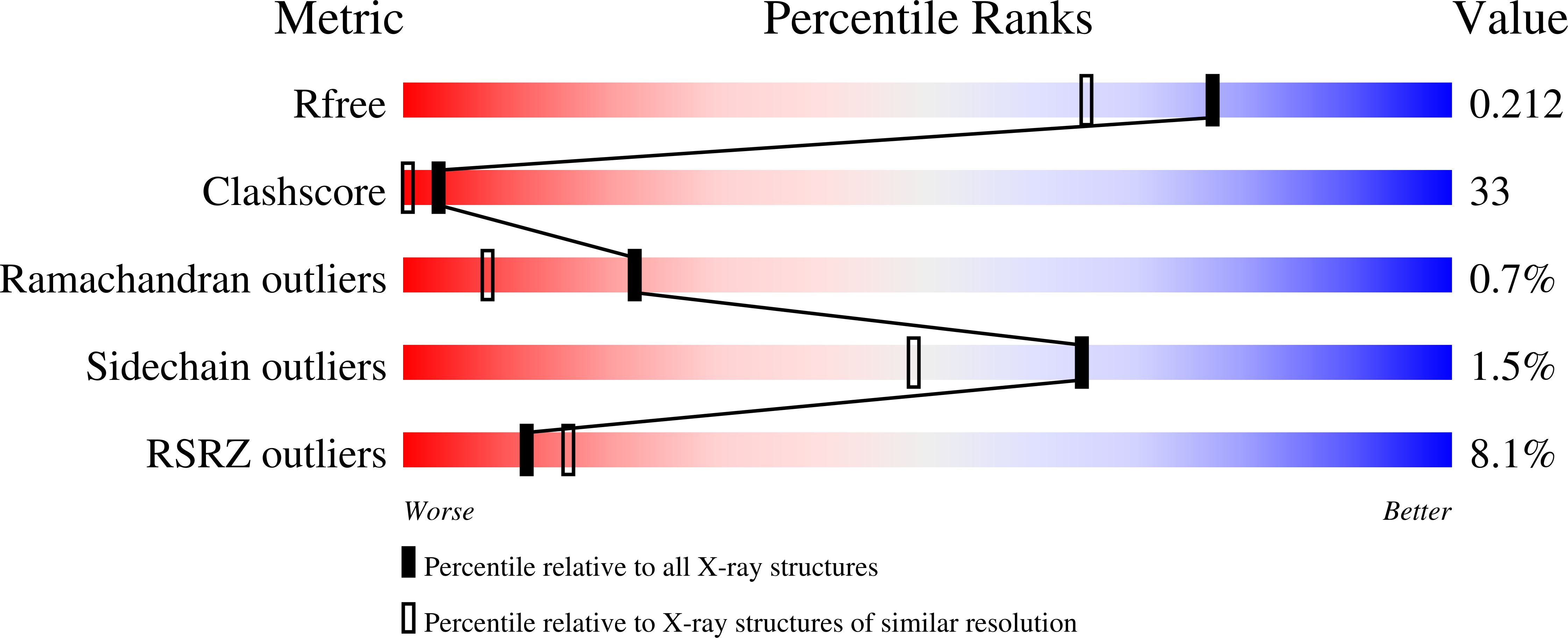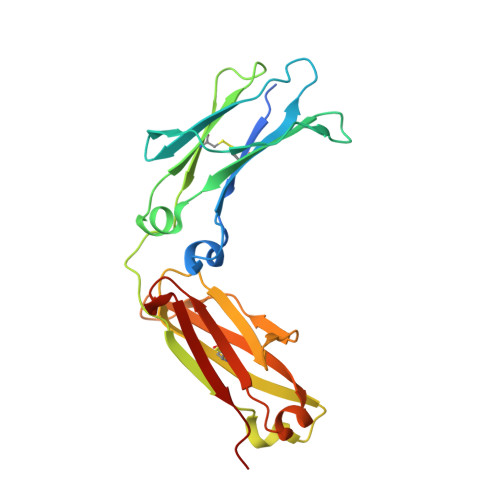Improving Biophysical Properties of a Bispecific Antibody Scaffold to Aid Developability: Quality by Molecular Design.
Von Kreudenstein, T.S., Escobar-Carbrera, E., Lario, P.I., D'Angelo, I., Brault, K., Kelly, J., Durocher, Y., Baardsnes, J., Woods, R.J., Xie, M.H., Girod, P., Suits, M.D.L., Boulanger, M.J., Poon, D.K.Y., Ng, G.Y.K., Dixit, S.B.(2013) MAbs 5: 646
- PubMed: 23924797
- DOI: https://doi.org/10.4161/mabs.25632
- Primary Citation of Related Structures:
4BSV, 4BSW - PubMed Abstract:
While the concept of Quality-by-Design is addressed at the upstream and downstream process development stages, we questioned whether there are advantages to addressing the issues of biologics quality early in the design of the molecule based on fundamental biophysical characterization, and thereby reduce complexities in the product development stages. Although limited number of bispecific therapeutics are in clinic, these developments have been plagued with difficulty in producing materials of sufficient quality and quantity for both preclinical and clinical studies. The engineered heterodimeric Fc is an industry-wide favorite scaffold for the design of bispecific protein therapeutics because of its structural, and potentially pharmacokinetic, similarity to the natural antibody. Development of molecules based on this concept, however, is challenged by the presence of potential homodimer contamination and stability loss relative to the natural Fc. We engineered a heterodimeric Fc with high heterodimeric specificity that also retains natural Fc-like biophysical properties, and demonstrate here that use of engineered Fc domains that mirror the natural system translates into an efficient and robust upstream stable cell line selection process as a first step toward a more developable therapeutic.
Organizational Affiliation:
Zymeworks Inc.; Vancouver, BC Canada.





















